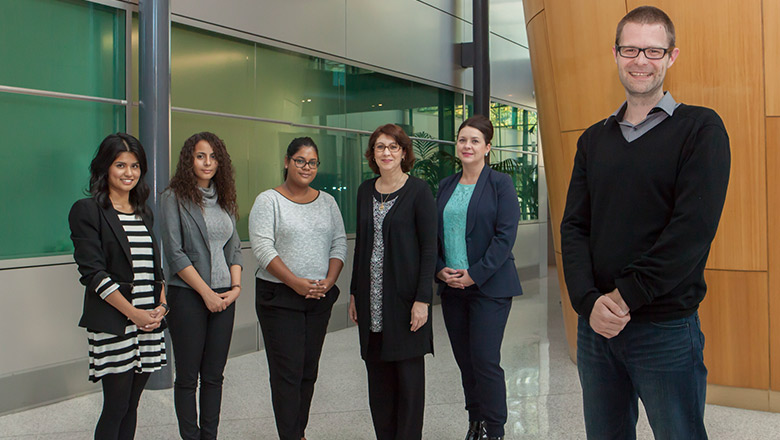Why identifying subtle symptoms in babies could change their lives
Focussing attention on a child’s first year of life is proving to be a major breakthrough in autism research.
Professor Andrew Whitehouse said this very early intervention was the new frontier and provided hope for a long-term reduction in disability.
“By providing therapies in the first year of life, we may be able to make even greater gains than we thought, like helping a child to develop language where they may not otherwise have done so,” he said. “That is truly life-changing.”
The head of the Autism Research Team at The Kids Research Institute Australia said its goals were to discover the causes of autism spectrum disorders and find ways to help these people live the most fulfilling lives possible.
He was drawn to the field in 2001 during his undergraduate studies in speech pathology, when the son of a family friend was diagnosed with the learning and behavioural disorder.
“I was captivated by the struggle of the family, firstly the recognition that something was different with their child, secondly the struggle to get a diagnosis and thirdly the struggle to find therapy, and all the while grieving for the hopes and dreams of their child that may never be fulfilled,” he said.
“I thought if I could dedicate my working life to this, it would be a life well spent.”
In the 14 years since, understanding about autism has come along in leaps and bounds.
“When I started out, autism was considered one disorder with one cause,” Professor Whitehouse said. “We now know that there are many different causes of the many different types of autisms. We are no longer looking for one cause, we are looking for dozens upon dozens of causes.”
For about 15 per cent of autism cases, it is known what caused the brain to develop differently - about 20 causes have been pinpointed. “The other 85 per cent that remain are the mystery that keeps me going,” Professor Whitehouse said.
Recognising autism as a range of multiple disorders makes it easier to tailor intervention programs to the individual.
Autism is diagnosed based on behaviour and the earliest it can usually be picked up is around two or three years of age.
But the fledgling practice of targeting early signs of autism in the first 12
months of life, which has been backed up by a recent British study, has Professor Whitehouse excited.
“What we have contributed to the international effort is that you can actually start identifying symptoms - more subtle symptoms - before the age of two or three,” he said. “In the first year of life, the brain is so changeable, more so than at any other time in our lives.
“By helping to identify risk factors in the first year of life, irrespective of the causes, we can say ‘there’s a child with that red flag’ and start to provide intervention and it will reduce their disability later in life. We can shift the brain back on to a more typical neurodevelopmental path.
“The hope is that children who may never have been able to talk will be able to develop language and social relationships, go through school, get a job and have a happy and healthy life.”.
With so much research focused on children with autism, Professor Whitehouse has also developed an assessment for adults which is now used internationally.
What is autism?
Autism is a developmental condition characterised by difficulties in social interaction and communication. People with autism can display very different behaviours depending on where they fall on the spectrum — some are high-functioning, while others may be intellectually disabled and non-verbal.
- One in every 100 children in Australia is diagnosed with Autism Spectrum Disorder - a 25-fold increase over the past 50 years.
- Autism affects about four times as many boys as girls.
- There is about a 20 per cent chance that if one child has autism, another sibling will too.
What’s next?
His team was the first in the country to create a biological registry for autism, which directly led to the creation of the new Australian Autism Biobank by Cooperative Research Centre (CRC) for Living with Autism.
With genetics playing a key role, the biobank will store information collected from more than 1200 affected families.
According to project leader Professor Whitehouse, it will allow “unprecedented biological discovery” into autism and hopefully push that 15 per cent with known causes up to 30-40 per cent.

